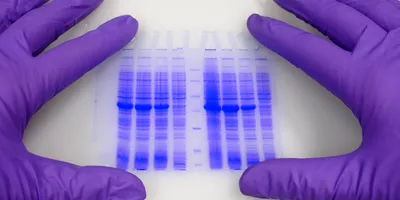Electrophoresis techniques are fundamental tools for separating nucleic acids, proteins, and other biomolecules based on their size, charge, or conformation. Among the most commonly used methods are capillary electrophoresis (CE) and gel electrophoresis. Both techniques leverage an electric field to drive molecules through a medium, but they differ significantly in setup, resolution, speed, and automation capabilities.
This article compares capillary electrophoresis vs gel electrophoresis, highlighting how each works, their strengths and limitations, and when to choose one over the other.
What is Capillary Electrophoresis (CE)?
Definition and Overview
Capillary electrophoresis (CE) is an advanced analytical technique that uses a narrow-bore capillary tube to separate molecules based on their size-to-charge ratio under the influence of an electric field. The technique leverages the small internal diameter of the capillary, which allows for efficient heat dissipation and application of high voltages, resulting in fast separations with high resolution.
CE is commonly used for separating nucleic acids, proteins, peptides, and small molecules in applications ranging from genetic analysis and protein characterization to pharmaceutical quality control. Its flexibility and ability to handle very small sample volumes make it suitable for analyzing precious or low-yield samples. Additionally, the technique can be fully automated, allowing for high-throughput processing in both research and clinical settings.
Advantages of Capillary Electrophoresis
- High resolution with sharp, well-defined peaks.
- Fast analysis times, often within minutes.
- Automation-friendly, minimizing manual handling.
- Low sample and reagent consumption.
- Suitable for both nucleic acids and proteins.
Limitations of Capillary Electrophoresis
- Requires specialized instrumentation.
- May be less suitable for very large DNA or protein complexes.
- Higher equipment costs than traditional gel electrophoresis.
What is Gel Electrophoresis?
Definition and Overview
Gel electrophoresis is a traditional, versatile technique for separating DNA, RNA, and proteins using a gel matrix—typically composed of agarose (for nucleic acids) or polyacrylamide (for proteins). Separation occurs as molecules migrate through the porous gel under the influence of an electric field, with smaller molecules moving faster and larger molecules moving more slowly.
Gel electrophoresis is especially well-suited for visualizing and analyzing larger biomolecules, such as genomic DNA, or performing routine checks on PCR products. It is widely used in academic research labs, clinical diagnostics, and forensic science due to its simplicity, low cost, and ease of setup. Despite its lower resolution compared to capillary electrophoresis, its ability to generate direct visual output (e.g., bands on a gel) makes it an essential tool for qualitative analysis and sample verification.
How Gel Electrophoresis Works
Samples are loaded into wells in a gel matrix submerged in an electrophoresis buffer.
An electric field is applied, causing molecules to migrate through the gel.
Molecules separate based on size (in agarose gels) or size and charge (in polyacrylamide gels).
Molecules are visualized using dye staining or fluorescence imaging.
Advantages of Gel Electrophoresis
- Inexpensive equipment and reagents.
- Visual output, easy to interpret.
- Works well for larger molecules such as genomic DNA.
- Flexible format—horizontal and vertical configurations.
Limitations of Gel Electrophoresis
- Lower resolution than capillary electrophoresis.
- Labor-intensive and manual handling required.
- Longer run times compared to CE.
- Quantification can be less precise.
Capillary Electrophoresis vs Gel Electrophoresis: Key Differences
| Aspect | Capillary Electrophoresis (CE) | Gel Electrophoresis |
|---|---|---|
| Separation Medium | Narrow capillary tube with buffer | Gel matrix (agarose or polyacrylamide) |
| Separation Basis | Size and charge | Primarily size (DNA/RNA) or size & charge (proteins) |
| Resolution | High | Moderate |
| Run Time | Minutes | Hours |
| Automation | Fully automatable | Mostly manual |
| Equipment Cost | Higher | Lower |
| Reagent Consumption | Low | Higher |
| Sample Suitability | Small DNA, RNA, proteins | Large DNA, RNA, proteins |
Applications of Capillary and Gel Electrophoresis
DNA and RNA Analysis
Both techniques are frequently used for nucleic acid separation, but their applications differ based on the sample type and analytical needs.
- Capillary Electrophoresis: Preferred for high-throughput sequencing, fragment analysis, and mutation detection due to its high resolution and speed.
- Gel Electrophoresis: Common for routine DNA size-checking, such as verifying PCR products or performing restriction fragment analysis.
Protein Analysis
Both methods are suitable for protein separation, though they offer different advantages.
- Capillary Electrophoresis: Ideal for quantitative protein profiling, isoform separation, and charge-based analysis, particularly in pharmaceutical and biopharmaceutical quality control.
- Gel Electrophoresis: Widely used in SDS-PAGE and 2D gel electrophoresis for visualizing protein mixtures and identifying protein molecular weights.
Forensic and Clinical Applications
- Capillary Electrophoresis: Critical for forensic DNA profiling, where precise fragment sizing is essential for matching DNA samples.
- Gel Electrophoresis: Often used in clinical diagnostics, such as separating hemoglobin variants or analyzing serum proteins.
When to Use Capillary vs Gel Electrophoresis
| Scenario | Use Capillary Electrophoresis | Use Gel Electrophoresis |
|---|---|---|
| High resolution and precise quantification needed | ✅ | |
| Speed and automation required | ✅ | |
| Analyzing small nucleic acids (e.g., microsatellites) | ✅ | |
| Working with limited sample volumes | ✅ | |
| Visualizing large DNA fragments (genomic DNA) | ✅ | |
| Conducting simple, low-cost separations | ✅ | |
| Routine PCR product analysis | ✅ | |
| No specialized instrumentation available | ✅ |
Final Thoughts on Capillary Electrophoresis and Gel Electrophoresis
Both capillary electrophoresis and gel electrophoresis are indispensable tools in molecular biology and analytical chemistry, but they excel in different contexts. Capillary electrophoresis offers unmatched resolution, speed, and automation potential, making it the preferred choice for high-precision and high-throughput applications, particularly in sequencing, forensic science, and pharmaceutical analysis. Meanwhile, gel electrophoresis remains a versatile, cost-effective method for routine nucleic acid and protein separations, particularly in academic research and diagnostic labs.
Choosing the appropriate technique depends on sample type, throughput needs, resolution requirements, and available equipment, with many laboratories integrating both methods into their workflows to maximize flexibility and analytical power.












